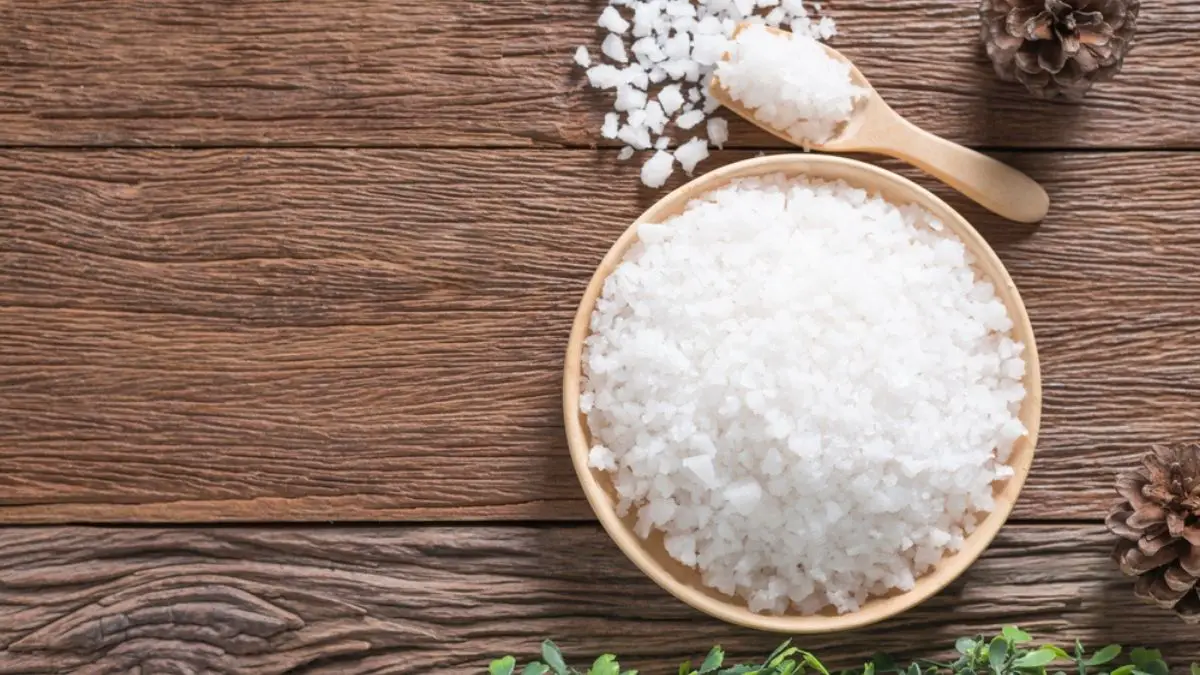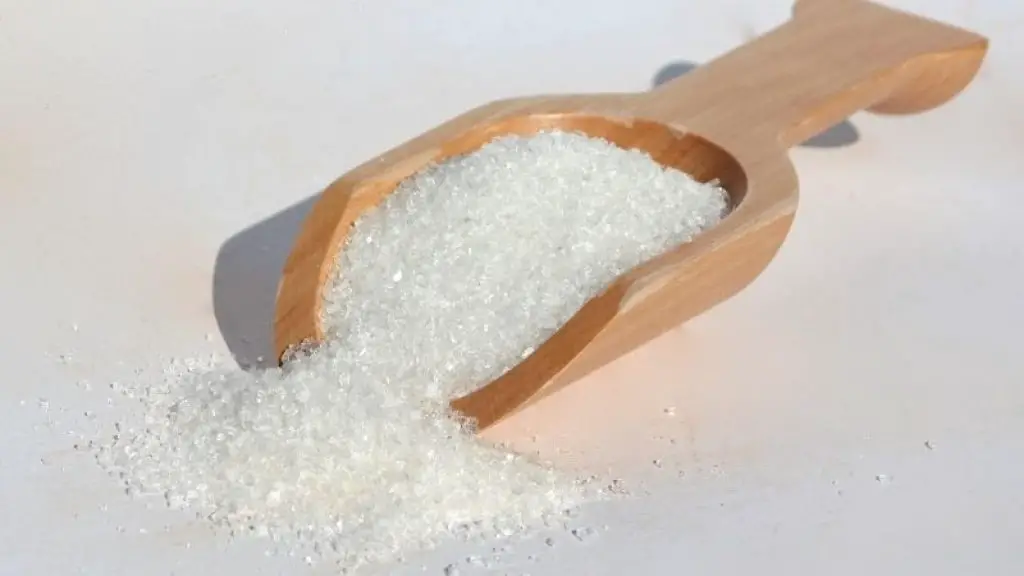Foliar Feed of Epsom Salts: Apply this for an Ideal Garden

Do you want your plants to stay in perfect health and give you more yield? Then we suggest you Go Organic. Yes, you heard that right! Gone were the days when people used to think growing plants organically is a traditional and old way. Now, experts can’t stress enough the importance of organic materials in the garden. Foliar Feed of Epsom Salts is one of the organic ways to grow your garden eco-friendly.
But you must be wondering, is Foliar Feed of Epsom Salts really a miracle that will serve all purposes? Sorry to burst the bubble but it is not what you think! So, what are its limitations? Meanwhile, why some experts have called it a necessity for many plants and how to use Epsom salts as a fertiliser?
Enough about asking questions and let’s dive straight into the topic for shocking answers.
What is Epsom Salt?
Using Epsom salt is one of the popular organic methods to improve plants’ health. Epsom salts have two main components: Sulfur and Magnesium. It includes 13 Percent Sulfur and 10 Percent Magnesium. Gardeners who add eggshells, compost, banana peels, chicken bones also plan to add Epsom to enrich the soil with magnesium and sulfur.
Epsom salt has a variety of uses which include fertilizer, foliar spray, soil amendment, and many more. Thus, we use Foliar feed of Epsom salt to obtain desirable outcomes from the plants. But how can Epsom be added? Epsom can either be added as a solution or sprayed on the plants directly to improve their health.
Benefits of Epsom Salts Foliar Feed
Epsom salts foliar feed has the most amazing benefits:
- Epsom salt produces more flowers on a plant.
- You can get a higher yield from Epsom feed.
- Your plants appear greener when you spray the solution on them.
- When Epsom is mixed into the soil, it aids in quick seed germination.
- Epsom solution reduces the alkalinity of the soil as well.
- Roots and cell walls are developed properly due to Epsom.
- Photosynthesis in leaves increases due to magnesium in the Epsom. So, more food is produced and the plant gives more production.
- It is cheap and is available in almost every drug store.
- When the hydrated magnesium sulfate (Epsom) is sprinkled around the plants, It can irritate insects Thus, it also acts like an excellent pest- repellant.
We apply Epsom solution on plants like peppers, tomatoes, pumpkin, cucumber, spinach, lettuce, peas, etc. Two methods are generally used to apply this solution: Fertilizer and spray.
Is Epsom Salt Good for Plants?
The National Gardening Association conducted some tests on Epsom. Two different types of plants were under trial which was grown all over the USA. Two-thirds of analysts found that those plants which were treated with Epsom showed much better results than those grown without Epsom feed. Lands treated with Epsom produced larger fruits, had more flowers, and greener foliage than those grown without Epsom.
However, another study was conducted by Washington State University on Epsom. According to the study, Epsom is good to use but not that great and you should not solely rely on it.
Moreover, it stated that Epsom spray has the potential to only improve the condition of nutrient-deficient plants and not to bring it into the stellar range. One important outcome of this study was the proper application is necessary to reap maximum benefits from the Epsom solution.
When to Add Foliar Feed of Epsom Salts?
So, now it is time to talk about when you can add the Epsom feed. There are not many articles out there online which deal with this portion. So, stay active and learn what we have to say.
We add Epsom salt when:
- Before sowing or transplanting, add Epsom solution.
- Spray Epsom solution when it’s time for flowers to bloom.
- Add Epsom to those areas where magnesium is low in the soil. But how can you know that? (We have discussed it later in this article!).
- Those plants which require magnesium to give fruits. Plants like peppers, pumpkin, cucumber, roses, tomatoes require more magnesium levels to give the desired results. So, such crops are given Epsom solution either in the form of fertilizer or in the form of a spray.
How to Use Epsom Salts as a Fertiliser? (Application Guide)
Want to know how to feed plants with Epsom salts? Epsom is applied in two forms:
- Spray
- Fertilizer
Want to know how to use Epsom salts as a fertilizer? For peppers and tomatoes, add one tablespoon of Epsom in a gallon of water and apply it around tomato and peppers transplants. You can either spray the seedlings or provide this solution to the soil.
Moreover, after transplanting, add this solution in the first bloom and then apply the third batch when the fruit will start ripening. You have to take care of the quantity of the Epsom you are adding to the water.
So, what are the Optimum Epsom Salt dosage rates? Epsom Salt dosage rates are different for different plants.
You prepare the dosage by mixing the Epsom salt in water. The water to Epsom salt ratio is different in vegetables and flowers.
How to Foliar Spray Epsom Salts on Vegetable Plants?
For leafy vegetables, add 2 tablespoons (30 ml) in one gallon of water. Then, sprinkle it on the plants in the form of fertilizer. Do this at least once a month. Moreover, if required, you can also add another Epsom solution within a month but this time add 1 tablespoon of Epsom in the one gallon of water.
However, we recommend you to be careful while adding more Epsom as it can lead to the accumulation of salts. There is the answer to one of the most asked questions related to this, how to foliar spray Epsom salts on vegetable plants.
How to Foliar Spray Epsom Salts on Flowers?
In the case of roses, add 1 tablespoon of Epsom in a gallon of water and make a foliar spray. Apply this spray for each foot (31 cm) of shrub’s height. Dosage for Epsom Salt foliar spray should not be increased than recommended. Moreover, timing is also important while adding anything organic, in the case of Epsom, adding it in springtime is better.
In Roses, in the springtime, flowers bloom. So, the extra energy of plants is being spent on the formation of buds and then opening it. Adding Epsom at the time of bud formation and flower blooming will increase the beauty of plants and will help them produce more flowers.
These are the general Epsom Salt dosage rates for vegetables and flowers. So, grow your dream garden by adding an Epsom solution to the garden. Now you also know the answer to the most asked questions Why & How to Use Epsom Salt in Your Vegetables and flowers.
Problems with Foliar Feed of Epsom Salts
There is only one major problem with Epsom salts foliar feed. It does not contain three major nutrients a plant needs: Nitrogen, Phosphorus, and Potassium. It only consists of trace minerals (magnesium and sulfur).
But that does not mean magnesium and sulfur have no importance. Without magnesium, leaves will start getting yellow from the veins. Moreover, the photosynthesis rate will drop due to this. Magnesium promotes chlorophyll production which does photosynthesis.
In addition to this, for seed germination and root development, magnesium in good quantity is necessary. This shows you cannot ignore magnesium’s importance for plant health.
Similarly, deficiency of Sulfur is also detrimental for plants. Sulfur deficiency causes plants to be short (stunted growth) with low fruit quality. Moreover, maturity is delayed in this as well and the plant appears to be in light shade. So, give proper respect to magnesium and sulfur for better output from plants.
To treat alkaline soil, we can use Epsom salts foliar feed. Epsom increases the acidity of the soil and reduces the alkalinity. Thus, it contributes to better production. But you have noticed one point here, Epsom cannot be added into an already acidic soil.
So, how can you know which type of soil you have? The answer is, do a soil pH test. A soil pH can be done by machines that are easily available online.
Moreover, a soil test is also conducted to know which nutrients the soil is lacking. So, add Epsom feed if the soil is lacking magnesium and sulfur.
Also, be careful while applying Epsom fertilizer. It can lead to excess salts in the soil which will negatively impact root growth. Moreover, extra salt can even enter plants and cause burns. So, take extra care when you add Epsom fertilizer.
In addition to this, you should know what are the requirements of your plants. For example, if you are growing beans, you must be aware that they can grow in low magnesium levels in the soil as well. So, there is no need to add Epsom solution if you are growing these crops.
Signs When You Should Add Foliar Feed of Epsom Salts?
Following are the signs that tell you the need to add an Epsom solution. If you don’t take care of the plant’s magnesium intake, then they will have stunted growth along with some other undesirable traits. Thus, look for magnesium deficiency signs.
- If the yellowing starts around the veins of the leaf
- Leaves start to curl due to deficiency of magnesium
- Fruits ripe slowly
- Fruits, even though they ripe slowly, are not sweet
To remedy this, you should add something organic and rich in magnesium. So, I have a question for you, what should we add? Yes, you guessed that right, we will add the Epsom feed. Now you know the importance of Foliar Feed of Epsom Salts.
Final Words
All-inclusive, everyone should adopt some measures to promote organic gardening. A foliar feed of Epsom salts is the best organic source of magnesium and sulfur. Plants require these nutrients to give more yield. Add them in the form of foliar spray or fertilizer and see the positive results yourself.
But the condition is that you must add it in the recommended amount at the recommended time which we have told in this article above. So, follow these guidelines and enjoy Gardening With EPSOM SALT For A Greener & Healthier plant.
Oh and also, we have also answered FAQs to further facilitate you.
FAQs About Foliar Feed of Epsom Salts
How do you spray plants with Epsom salt?
Do you want Epsom salt application help? Well, we suggest you read the article thoroughly. To give you an overview, make a mixture of one or two tablespoons of Epsom in one gallon of water and put it in the spray bottle. Then, mist the plants to get a greener look from them. This is the Dosage for Epsom Salt foliar spray. Do this once in a month at least (twice if the temperature is too high).
Can I put too much Epsom salt on plants?
No, you cannot add too much Epsom. You should know how to feed plants with Epsom salts in a proper way. Too much Epsom will accumulate in the soil and it will also go into the plants with water. Hence this unnecessary uptake of nutrients will cause a burn. So, add proper Dosage for Epsom Salt foliar spray.
What plants can Epsom salts be used on?
Epsom can be used on those plants that require more magnesium to grow properly. Such plants are peppers, pumpkin, tomatoes, cucumbers, roses, and leafy vegetables. People ask, Why & How to Use Epsom Salt in Your Vegetable and flowering plants. We have described the answer in detail.
Quick Note: It is not recommended for those plants which do not require magnesium for proper growth.
Do you put Epsom salts on tomato plants?
Yes, we do put solutions of Epsom salts on tomato plants in the form of a spray. Moreover, you can add Epsom granules around the transplants or seedlings of tomatoes as well.
Related Topics:











